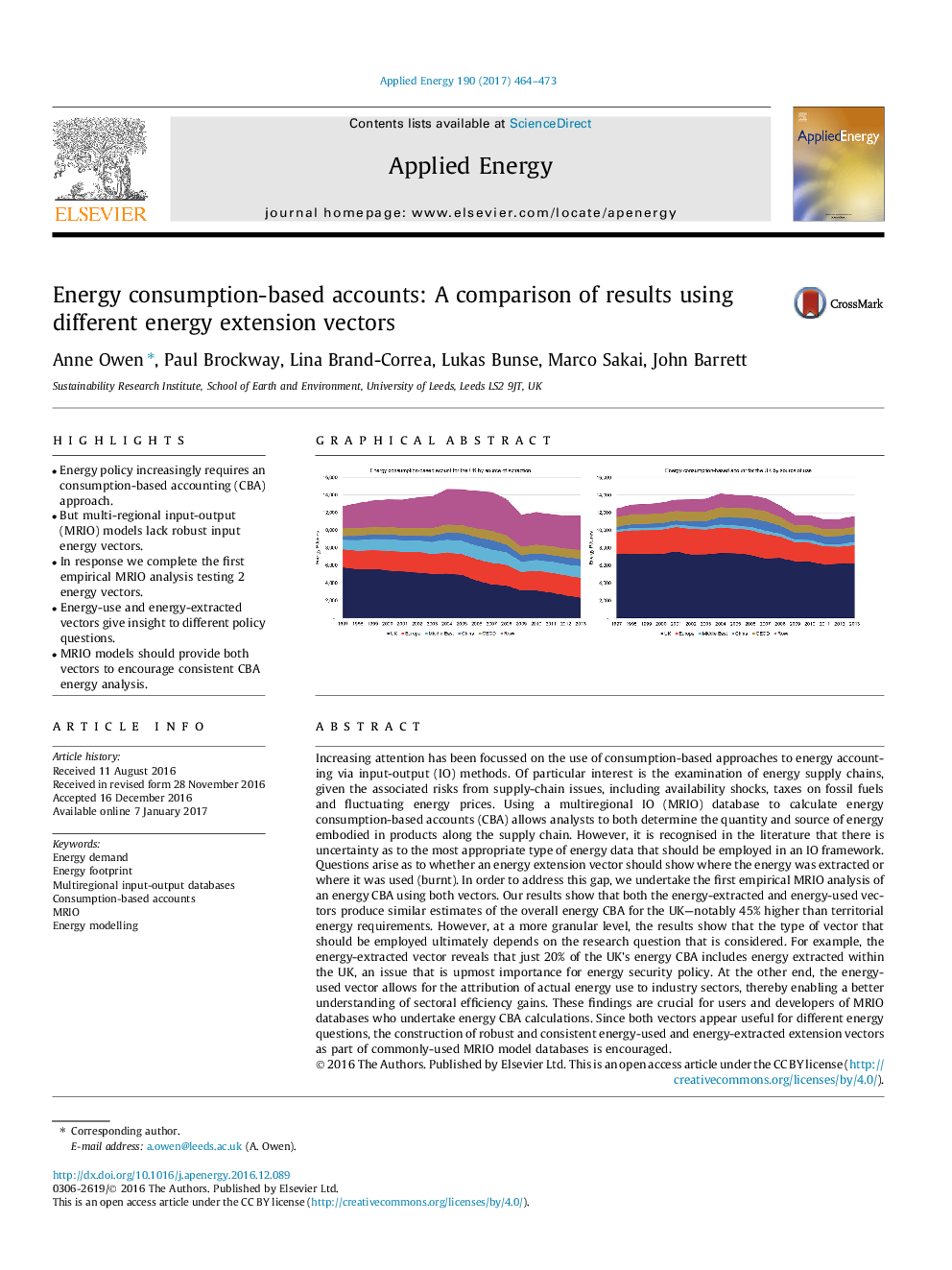| کد مقاله | کد نشریه | سال انتشار | مقاله انگلیسی | نسخه تمام متن |
|---|---|---|---|---|
| 6478532 | 1428100 | 2017 | 10 صفحه PDF | دانلود رایگان |
- Energy policy increasingly requires an consumption-based accounting (CBA) approach.
- But multi-regional input-output (MRIO) models lack robust input energy vectors.
- In response we complete the first empirical MRIO analysis testing 2 energy vectors.
- Energy-use and energy-extracted vectors give insight to different policy questions.
- MRIO models should provide both vectors to encourage consistent CBA energy analysis.
Increasing attention has been focussed on the use of consumption-based approaches to energy accounting via input-output (IO) methods. Of particular interest is the examination of energy supply chains, given the associated risks from supply-chain issues, including availability shocks, taxes on fossil fuels and fluctuating energy prices. Using a multiregional IO (MRIO) database to calculate energy consumption-based accounts (CBA) allows analysts to both determine the quantity and source of energy embodied in products along the supply chain. However, it is recognised in the literature that there is uncertainty as to the most appropriate type of energy data that should be employed in an IO framework. Questions arise as to whether an energy extension vector should show where the energy was extracted or where it was used (burnt). In order to address this gap, we undertake the first empirical MRIO analysis of an energy CBA using both vectors. Our results show that both the energy-extracted and energy-used vectors produce similar estimates of the overall energy CBA for the UK-notably 45% higher than territorial energy requirements. However, at a more granular level, the results show that the type of vector that should be employed ultimately depends on the research question that is considered. For example, the energy-extracted vector reveals that just 20% of the UK's energy CBA includes energy extracted within the UK, an issue that is upmost importance for energy security policy. At the other end, the energy-used vector allows for the attribution of actual energy use to industry sectors, thereby enabling a better understanding of sectoral efficiency gains. These findings are crucial for users and developers of MRIO databases who undertake energy CBA calculations. Since both vectors appear useful for different energy questions, the construction of robust and consistent energy-used and energy-extracted extension vectors as part of commonly-used MRIO model databases is encouraged.
141
Journal: Applied Energy - Volume 190, 15 March 2017, Pages 464-473
